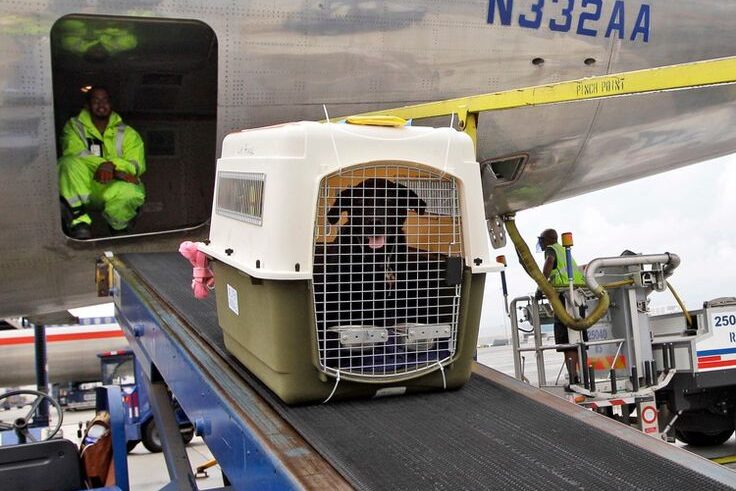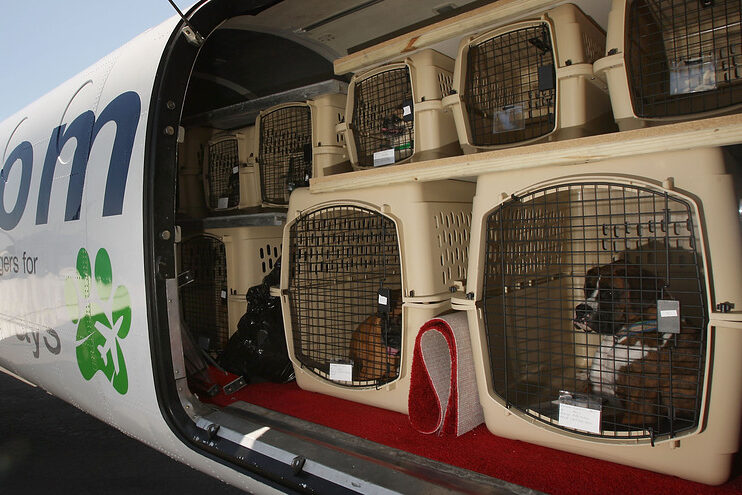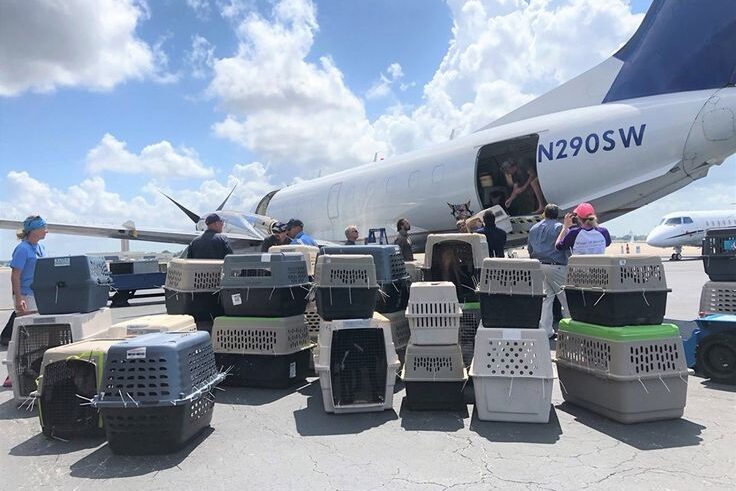1. Lost or Euthanized Pets

Sadly, airlines have lost pets; or even worse, accidentally euthanized them without notifying owners. Many pet parents trust airlines with their furry loved ones, only to receive heartbreaking news later. One headline tells of “Jack the Cat,” who went missing for two months at JFK before being found wounded and ultimately euthanized. Over a four-year period in the U.S., there have been hundreds of instances where dogs and cats were reported lost, injured, or killed in transit, with companies like Continental experiencing dozens of such incidents. This highlights the significant risks associated with transporting pets via air, particularly in terms of mishandling and potential safety issues. These tragic stories remind us that pets are more than just cargo; they’re family.
2. Dangerous Temperature Extremes

Cargo holds aren’t always climate-controlled, and pets can suffer from heat or cold; even on short flights. Airlines often limit pet transport when forecasted temps exceed 85°F (29.5 °C) or drop below 45°F (7 °C). Air Canada’s pet travel policies regarding extreme temperatures (above 85°F) and aircraft restrictions aren’t always consistent, according to Air Canada’s pet policy. While they restrict travel above 85°F, this applies only to some aircraft, and there may be a lack of transparency about which ones, and the exact temperature thresholds. Additionally, pets may face extreme conditions in unheated holds or on the tarmac, even with temperature restrictions, and during transit.
3. Breed Bans and Hidden Risks

Certain breeds are barred from cargo hold travel; and the reasons are often due to in-flight deaths. Airlines frequently place restrictions on short-nosed (brachycephalic) breeds like bulldogs, pugs and Frenchies, because their anatomy makes them prone to respiratory collapse. These bans are grounded in statistics: airlines recognize higher mortality rates among these breeds in cargo travel, but they don’t always provide warnings up front.
4. Mishandled Carriers

Believe it or not, your pet’s carrier might be handled exactly like a bag; dropped, thrown, or stacked improperly. While USDA guidelines state that pet carriers, or kennels, must be handled with care and not tossed, dropped, or needlessly tilted, it’s not always the case in reality, according to a YouTube video and Animal and Plant Health Inspection Service (.gov). This can lead to potential harm or distress for the animals, especially during air travel. Animals are sometimes loaded on conveyor belts with minimal oversight; and mishandling remains too common. Misplacement, stacking, or rough loading may seem like small things, but to a pet, even a few inches of misalignment inside a crate can cause panic or injury.
5. Crates Left on Tarmac in Extremes

Pets are frequently exposed to extreme weather conditions while waiting to be loaded onto planes, leading to tragic outcomes. A Qantas boxer named Duke died on the tarmac in 39°C (102°F) heat during a flight delay, highlighting the risk of leaving pets exposed. While Qantas and other airlines have policies to keep pets under cover, these are not always followed, according to a news report. A Facebook post described Duke being left on the tarmac in the sun for more than an hour after a flight delay, with no shade, leading to his death. The owner, Kay Newman, stated that Qantas freight staff had assured her that Duke would only be on the tarmac for a few minutes and would be kept under cover. Another French bulldog reportedly perished after being left in the sun for 40 minutes in ~90 °F heat before loading. And there are multiple incidents of pets stranded in the rain or cold without shelter.
6. Hours Without Food, Water, or Relief

Flight delays and logistical mishaps can leave pets stranded in cargo with no care. According to USDA records, animals have been left on tarmacs for hours; or even days; without food, water, or bathroom relief. In one widely shared case, a family’s dog “Lulu” was stuck in cargo during a lengthy delay, leading to distress and dehydration. Lulu was a five-year-old Cavalier King Charles Spaniel who tragically died while traveling in the cargo hold of a United Airlines flight from Houston to San Francisco. The family reported that Lulu was dead when they went to pick her up after a two-hour delay on the tarmac. The family is seeking answers and is blaming the airline for Lulu’s death. These delays may not even trigger alerts to caregivers, raising concerns about the safety of pets during air travel.
7. Sedation Risks Underplayed

Sedating your pet can cause serious health consequences; but airlines rarely alert you. Experts (including the AVMA) warn that sedatives raise risks of respiratory or cardiac failure at altitude, impairing your pet’s ability to respond to the environment. Also, Sedation can interact with other medications or pre-existing conditions, leading to unexpected complications and potentially delaying recovery after the flight. Some carriers outright prohibit sedation; others may not strongly discourage it; leaving owners unaware of the hidden dangers.
This story 7 Alarming Facts Airlines Don’t Tell You About Flying with Pets was first published on Daily FETCH


